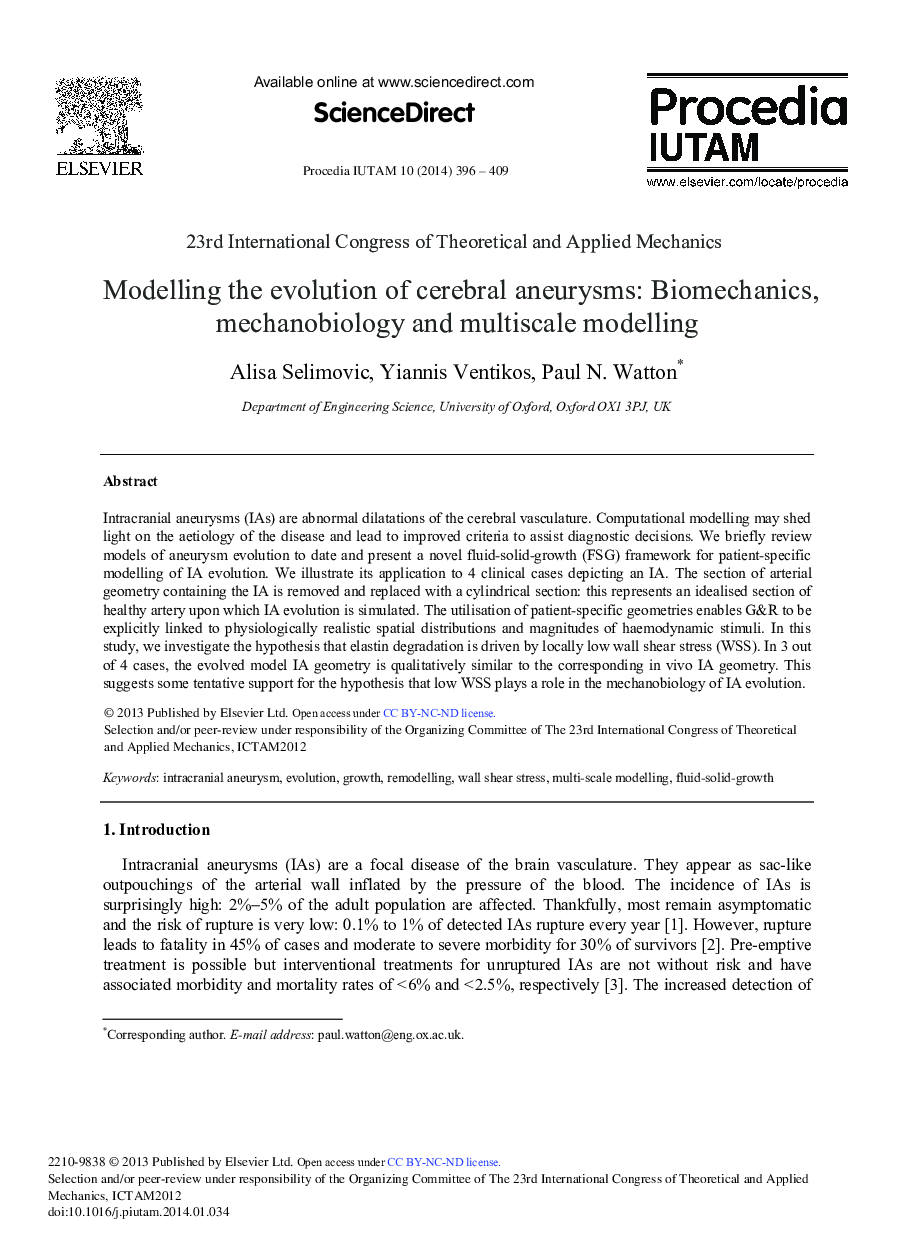| Article ID | Journal | Published Year | Pages | File Type |
|---|---|---|---|---|
| 864973 | Procedia IUTAM | 2014 | 14 Pages |
Intracranial aneurysms (IAs) are abnormal dilatations of the cerebral vasculature. Computational modelling may shed light on the aetiology of the disease and lead to improved criteria to assist diagnostic decisions. We briefly review models of aneurysm evolution to date and present a novel fluid-solid-growth (FSG) framework for patient-specific modelling of IA evolution. We illustrate its application to 4 clinical cases depicting an IA. The section of arterial geometry containing the IA is removed and replaced with a cylindrical section: this represents an idealised section of healthy artery upon which IA evolution is simulated. The utilisation of patient-specific geometries enables G&R to be explicitly linked to physiologically realistic spatial distributions and magnitudes of haemodynamic stimuli. In this study, we investigate the hypothesis that elastin degradation is driven by locally low wall shear stress (WSS). In 3 out of 4 cases, the evolved model IA geometry is qualitatively similar to the corresponding in vivo IA geometry. This suggests some tentative support for the hypothesis that low WSS plays a role in the mechanobiology of IA evolution.
